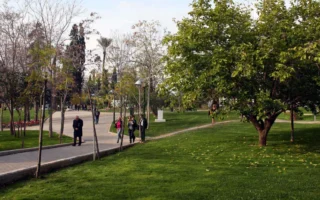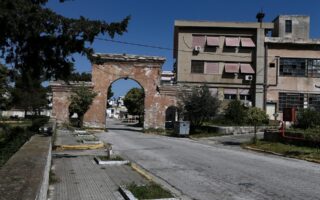Half of the population lives in small part of the country

Half of the population of Greece lives in just 4.3% of the territory, which corresponds to 5,241,300 people, according to 2021 census data processed by the Demographic and Social Analysis Laboratory at the University of Thessaly.
The over-concentration of Greek population in an extremely limited area of the territory makes the living conditions in Attica unbearable and threatens the region with desertification.
The problem is intensified by the climate crisis and the lack of a planned urban fabric. The solution is offered by sustainability practices in Attica and, above all, the reversal of the trend through regional development – an undertaking that is easier to formulate than to implement.
At the level of municipal communities, with a reference year of 2021, 277 out of 6,138 – i.e. 4.5% of the total number – gather more than 80% of the population. It is indicative that 23 municipal communities have densities of more than 10,000 people per square kilometer with four of them exceeding 20,000 people per square kilometer.
“For 50 years we have had massive flows of internal migration which have been served by arbitrary construction and encroachment. In fact, the model that got us this far was based on the logic of over-education and mobility,” said Byron Kotzamanis, demography professor at the University of Thessaly.
“To put it simply, the farmer’s son immigrated to the city to become a university professor,” he told Kathimerini.
The same path has been followed by foreign immigrants, who have also settled in the urban centers, except for those who moved to the islands to work in tourism.
To understand the increase in inequality in the distribution of the population over the decades, in 1951, 80% of the population was concentrated in 2,179 of the 5,795 municipal entities – i.e. 37% of their total – and only eight had density of more than 10,000 people per square kilometres.
The overconcentration of population in Attica was combined with chronic failures of the state in planning a sustainable megacity which, in the eyes of experts, makes it a unique case.
The demographic decline is unable to reverse the population figures of Attica. On the contrary, it intensifies the desertification trends in the periphery. The total population in Greece is projected to decrease from a few hundred thousand to more than 1.5 million people by 2050 – from 5% to 10%, depending on the immigration balance. However, the rates of decline will be much higher in a large part of the countryside on the mainland – such as Macedonia, Epirus, and Laconia in the Peloponnese – than in the metropolitan areas of Athens, Thessaloniki and other large urban centers.
Possible solutions to the problem include:
-Exhausting the scope for interventions in Attica with the aim of reversing part of the plans that shaped it, such as demolitions or illegal buildings, reforestation, upgrading of building infrastructure and public spaces.
-Developing a national strategy for regional development so that provinces can attract a higher percentage of the total population. The expansion of tourism, technological and industrial investments, as well as digitization which – among other things – make remote work possible, can help in this direction.





